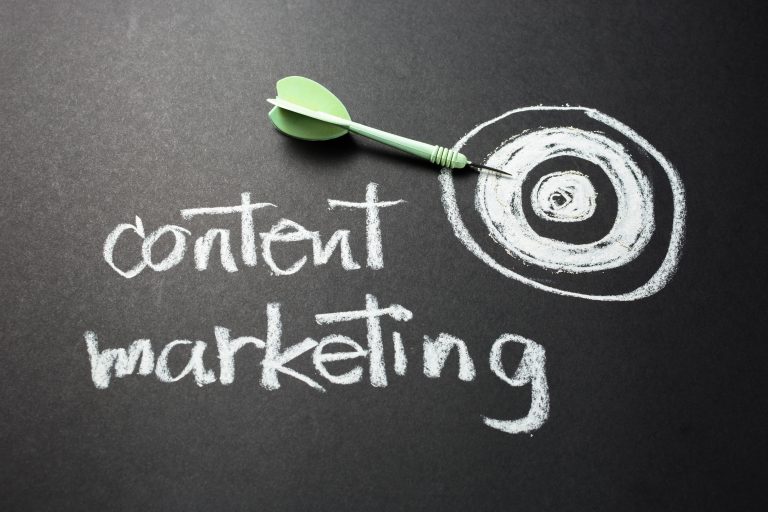Inbound marketing—often called content marketing—is all the rage right now. And there’s a good reason for that:
Or at least, it usually does. But more often than most would like to admit, content falls short. There are countless reasons why. And there are a couple fixes, too. We’ll cover all those in this blog.
What Is Content Marketing?
If you already feel lost, let’s back way up to the beginning. Content marketing is a way of increasing digital engagement (and sales) by helping people find what they’re looking for. (You can read our primer here.)
Here are the basics. The internet changed the way people shop. Now, instead of walking into a store or a credit union to ask questions about a product, they hop online and type their questions into a search engine.
Depending on the size of their purchase, they might do this for days, weeks, or even months. They’ll just keep reading about their options until they feel informed enough to make a decision.
And that’s when traditional sales comes into play. By the time a person is ready to buy, they might have read a dozen, two dozen, maybe three dozen articles about it.
Content marketers create those articles. They answer questions, suggest alternatives, and otherwise guide people through their research process.
Why Content Doesn’t Always Work
The problem with content marketing is that it’s a very competitive arena. You can’t just write about “credit union mortgages” and expect to appear on the front page of every search result. You’ll be lucky to show up on the 10th page, if at all.
Here are a few reasons your credit union’s content marketing strategy might not work.
1. Your content isn’t SEO optimized
SEO optimization is the practice of making your topic—and your writing—relevant to search engines.
A lot goes into SEO optimization. There’s written SEO, technical SEO, and a whole bunch of practices for either. The internet is a great source of SEO tips. Or, if you subscribe to our blog, you can see the CU 2.0 SEO checklist next week.
2. You don’t promote your content
Too many content marketers and credit unions believe, “if you build it, they will come.” (Maybe it’s more like, “if you write it, they will read.”)
That’s certainly not the case. You have to give your content a fighting chance. Usher people towards it through social media and email newsletter highlights. Feature new blogs on your homepage. Do something.
3. Your page doesn’t link to your blog
Blogs are one of the easiest types of content to create. They’re a go-to form of content that consumer read. And yet I’ve seen countless credit unions omit a link to their blog on their website.
So, one can get from the blog to the main page, but not vice versa.
How can you expect anyone to read your valuable insights if you hide them?
When Content Marketing Just Isn’t Enough
Sometimes, you do everything right. You write something long enough to rank in search engines. You optimize your SEO. You promote it and keep it visible.
Heck, you even get a few readers.
But it’s just not working. What’s going on?
For starters, inbound marketing strategies are unpredictable. You don’t know where a buyer is in their journey. You also don’t know where else they’re researching—or what else they’re reading.
The fact is that content marketing isn’t always enough. Sometimes you need to really get things going. Here are a couple ways you can supercharge your traffic, engagement, and sales.
1. Paid ad spend
Many inbound marketers would clutch their pearls at the thought of paid ad spend. Many others would nod sagely. It is a tried and true method, after all.
A little paid promotion will get your content seen by far more people. More people? More success!
2. Automated marketing
No doubt you’ve heard of marketing automation platforms. Or maybe you’ve heard their names:
- Hubspot
- Marketo
- SharpSpring
- Pardot
Often, marketing automation is that missing piece in content marketing strategy. Platforms record and quantify site visitor behavior. They also put follow-up on autopilot.
Marketing automation fills in one gap in particular:
What happens after someone finishes reading a piece of content? Instead of hoping they’ll stick around and find something else useful, the automation takes charge. It automatically emails appropriate follow-up content to ensure that reader can easily learn more about the subject of their query.
(At CU 2.0, we’ve seen a dramatic increase in content marketing efficacy after implementing marketing automation.)
Further Reading
In the spirit of transparency, we’re marketing automation evangelists here. It has helped us quickly scale up our content creation services—and made them way more effective.
Read more about what marketing automation does here.
Or subscribe to our blog to read more about credit union marketing strategies.




